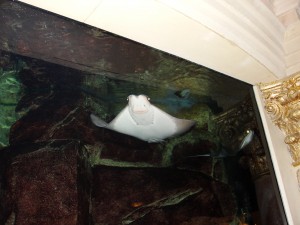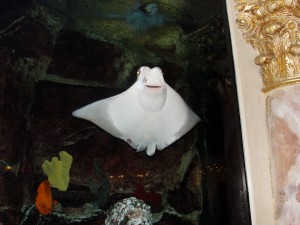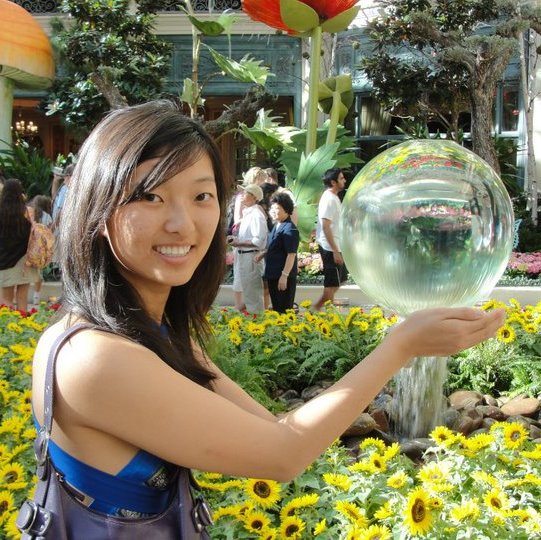I attended the Oppenheim lecture tonight, about green chemistry. It’s a growing sector that is coming up with innovations that are not only environmentally safe and sustainable for the long term, they work better and make more sense for the bottom line as well. While there are definitely plenty of “green” products that cost a premium, it doesn’t have to be that way. As our economy and society demand better, companies will respond with great new solutions to consumer needs.
Many of the solutions that Dr. Paul Anastas, the main speaker, pointed out were rooted in bio-mimicry. It’s a topic I’m fascinated with, since most (if not all) of the solutions we search for are already present in nature. For example, he told us of the pain of trying to redo a bathroom because of all the hardened glue you have to scrape away. It’s tedious and can be quite toxic too. Instead, we can learn from mussels, which very strongly adhere themselves to rocks and other things just as well, but need no dangerous chemicals to do so. By learning from the multitude of creatures in the world around us, we can find brilliant, simple, yet effective ways of solving many of our issues.
In addition, Dr. Anastas pointed out that we really have to allow disruptive inventions to come along. It’s not good enough to just improve some of the products we have now; we have to be willing to adopt a method that could completely upheave the way we’re used to doing things. Once upon a time any city would have telephone wires running overhead all over the place. Nowadays that becomes more and more unnecessary as we shift towards wireless signal towers. In the case of detergents, it is becoming a very real possibility that we could have self-cleaning clothes, which would wipe out the need for detergents! Or, when creating clothes, rather than using dyes that could be harmful, they are now experimenting with growing cotton that in itself already has color. It’s a willingness to completely rethink our approach to common issues that can lead to wonderfully disruptive changes to our lives and our way of life.
He also made sure to emphasize the fact that a company’s bottom line does not have to suffer for the sake of these new methods. In fact, these can be built into very lucrative businesses. What he said rang so true to what I’ve been learning from Opportunity Green as well: sustainability and environmental responsibility and very much in line with profitability, and not just because you’d have a green image. In fact, if you don’t even consider the environmental impact, so many of these solutions are just plain superior as is. Why wouldn’t you go with them? I think a lot of sustainability and the green movement has been misunderstood. People still think that to be eco-friendly is to be pricier. We need more companies out there to show people that this isn’t the case so that the general population can start adopting products that are better for us all – people, the environment, the world.
I’m hoping that part of my impact in the future will be along these lines. To break people away from the prejudices and misguided opinions of what it takes to be good to our environment. To show them that they can save money, save the environment, and make our world a better place all at the same time. It’s about time more light be shed on the beauty of green choices!







